Results 321 to 330 of 489
Thread Information
Users Browsing this Thread
There are currently 1 users browsing this thread. (0 members and 1 guests)
-
05-26-2023, 03:02 AM #321
Pediatricians are pushing “vaccines” because of Big Pharma bribe money – here’s the evidence
Wednesday, May 24, 2023 by: Ethan Huff
Tags: bad doctors, badhealth, badmedicine, Big Pharma, bribery, conspiracy, corruption, dangerous doctors, Dangerous Medicine, deception, evil, insanity, Medical Tyranny, pediatricians, pharmaceutical fraud, traitors, truth, vaccination, vaccine wars, vaccines
4,880VIEWS
 (Natural News) One big revelation that came out of the Wuhan coronavirus (COVID-19) “pandemic” involves the incestuous, revolving-door relationship between the government and the pharmaceutical industry. Hospitals and other health care facilities, we now know, were incentivized by the government to basically murder their patients in exchange for cash from Big Pharma, a cozy little arrangement that also seems to be true for pediatricians who are paid bribe money to push childhood vaccines on their patients.
(Natural News) One big revelation that came out of the Wuhan coronavirus (COVID-19) “pandemic” involves the incestuous, revolving-door relationship between the government and the pharmaceutical industry. Hospitals and other health care facilities, we now know, were incentivized by the government to basically murder their patients in exchange for cash from Big Pharma, a cozy little arrangement that also seems to be true for pediatricians who are paid bribe money to push childhood vaccines on their patients.
It is not just COVID “vaccines” that Western medicine continues to push on the public in exchange for pharmaceutical industry cash, but all vaccines. And since most vaccines are administered to children by pediatricians, it is important not to overlook the fact that this bribery scheme has been ongoing for decades, and did not just emerge as a product of covid.
A 1999 study published in the Journal of the American Medical Association (JAMA) found that the average patient load for an American pediatrician, at least at the time, was 1,546 – and “significantly higher in less populated areas and solo practices.” One in four pediatric patients at that same time was two years old or younger.
More recent data from 2021 shows that 75 percent of American pediatricians have between 1,000 and 1,800 patients, suggesting that not much has changed. What has changed is the revelation in 2016 that pediatricians receive about $400 per pediatric patient that receives all 10 of the following vaccinations, amounting to 25 doses total, before his or her second birthday:

- DTaP vaccine
- IPV vaccine
- MMR vaccine
- VZV vaccine
- HiB vaccines
- Hepatitis B vaccines
- PCV vaccines
- HepA vaccine
- RV vaccines
- Influenza vaccines
This $400 figure came from a document released by Blue Cross Blue Shield (BCBS) that was eventually leaked to reporters.
“Using the average statistics from 1999, if a pediatrician has 1,000 patients, 264 can be expected to be 2 years old or younger,” reports the Discern Report. “If all are fully vaccinated, the pediatrician would be eligible for a $105,600 year-end bonus.”
(Related: Some American pediatricians are child groomers in disguise who usher parents out of the room before pushing transgenderism on their innocent kids.)
If pediatricians fail to achieve BCBS “target” vaccination schedules, they receive NOTHING in terms of bribe money
In order to receive any money at all from BCBS, a pediatrician must at least reach a “target” level of 63 percent of the above vaccines. If a pediatrician achieves just 62 percent vaccination compliance or less, he or she receives nothing from BCBS.
So, as you can see, there is a strong incentive for American pediatricians to push as many vaccine injections as possible on children through their parents – because if there are too many “anti-vaxxers” enrolled at a given doctor’s office, then the pediatrician who runs it will not make any extra bribe money.
This would explain why some of the sleazier pediatric clinics will not even accept unvaccinated children. Parents have encountered door signage telling them to scram if they do not plan to jab their children, and chances are the offices in question want that sweet, sweet bribery cash from insurance carriers and the drug industry.
The black market for drugs does not even hold a candle to the criminal activity like this that plagues the legal drug racket. Doctors, pediatricians, pharmacists, and other white coat cartel members much reach certain quotas or else lose out on their cut of the bribery loot.
“Such incentives … end up forcing a doctor to consider the financial implications of accepting patients who even just want to opt out of one vaccine,” warns Dr. Bob Sears about the legal drug racket.
“Maybe a few such families wouldn’t make them fail the chart reviews, but if they have too many, there goes their year-end bonus.”
The latest news about the fascist corruption of Big Pharma, Big Government, and the Western medicine system can be found at BadMedicine.news.
Sources for this article include:
DiscernReport.com
NaturalNews.com
Pediatricians are pushing “vaccines” because of Big Pharma bribe money – here’s the evidence – NaturalNews.comIf you're gonna fight, fight like you're the third monkey on the ramp to Noah's Ark... and brother its starting to rain. Join our efforts to Secure America's Borders and End Illegal Immigration by Joining ALIPAC's E-Mail Alerts network (CLICK HERE)
-
05-26-2023, 03:52 AM #322
Studies show antioxidant-rich foods can help reduce risk of skin cancer
Wednesday, May 24, 2023 by: Evangelyn Rodriguez
Tags: alternative medicine, anti-cancer, antioxidants, beta carotene, catechins, diet, fasting, food cures, food is medicine, food science, goodcancer, goodfood, goodhealth, immune system, lycopene, natural cures, natural health, natural medicine, nutrients, omega-3 fatty acids, phytonutrients, polyphenols, prevent cancer, vitamin C, vitamin E, zinc
2,530VIEWS
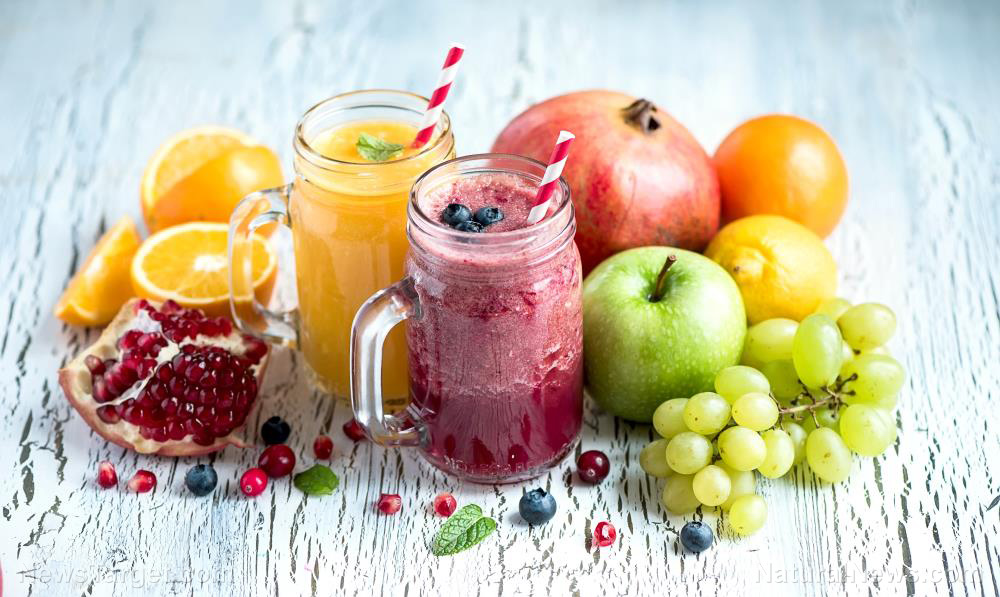 (Natural News) Diet is an important risk factor for cancer. According to a study published in JNCI Cancer Spectrum,low consumption of whole grains and dairy products and high consumption of processed meats can increase your risk of developing otherwise preventable cancer.
(Natural News) Diet is an important risk factor for cancer. According to a study published in JNCI Cancer Spectrum,low consumption of whole grains and dairy products and high consumption of processed meats can increase your risk of developing otherwise preventable cancer.
But just as poor diet can raise your likelihood of developing cancer, a healthy diet can help save you from this deadly disease. As reported by the Skin Cancer Foundation, there is growing evidence that eating foods rich in certain nutrients and plant compounds may help prevent skin cancer.
Facts about skin cancer
The main cause of skin cancer is excessive exposure to sunlight. Ultraviolet (UV) rays from the sun, as well as from sunlamps and tanning beds, are known to damage DNA, which dictates cell function. Over time, cumulative DNA damage can cause skin cells to proliferate uncontrollably, resulting in abnormal growths on sun-exposed skin. Although sun exposure is the most common cause of skin cancer, you can also develop the disease on areas not typically exposed to sunlight.
There are three major types of skin cancer: basal cell carcinoma, squamous cell carcinoma and melanoma. Non-melanoma skin cancers like basal and squamous cell carcinoma are the most common cancers in America, affecting some three million people each year. Although both cancers are malignant, they are usually not life-threatening. Squamous cell carcinoma is more aggressive than basal cell carcinoma, but it is fairly slow-growing.
Melanoma, the most serious type of skin cancer, is the fifth most common cancer among American men and women. Melanoma can spread to other parts of the body, such as the lymph nodes, brain, bones, liver and lungs. Because it can grow very quickly, this type of skin cancer can become life-threatening in as little as six weeks if left untreated. It is estimated that about 7,990 Americans will die of melanoma in 2023.
 Apart from limiting your sun exposure and protecting your skin from UV damage, recent studies have shown that following a healthy diet can help reduce your risk of skin cancer. For instance, a study by Italian researchers found that high adherence to the Mediterranean Diet is correlated with a lower incidence of melanoma. The researchers linked the protective benefits of the Mediterranean Diet to the consumption of foods rich in vitamins, minerals, healthy fats, polyphenols and flavonoids that exert anti-inflammatory, antioxidant and immune-modulating effects.
Apart from limiting your sun exposure and protecting your skin from UV damage, recent studies have shown that following a healthy diet can help reduce your risk of skin cancer. For instance, a study by Italian researchers found that high adherence to the Mediterranean Diet is correlated with a lower incidence of melanoma. The researchers linked the protective benefits of the Mediterranean Diet to the consumption of foods rich in vitamins, minerals, healthy fats, polyphenols and flavonoids that exert anti-inflammatory, antioxidant and immune-modulating effects.
Prevent skin cancer with an antioxidant-rich diet
According to a study published in the Journal of Skin Cancer, exposure to UV radiation is a major risk factor for the development of non-melanoma skin cancer. UV radiation triggers the production of free radicals, which can cause oxidative damage to skin cells and their components. DNA damage from oxidative stress has been shown to cause genetic mutations that can lead to tumor formation and skin cancer.
Research has also found that exposure to UV radiation can inhibit your immune system’s ability to fight infections and diseases like cancer. UVB, in particular, can cause immunosuppression by inducing the release of immunosuppressive chemicals, triggering programmed cell death in immune cells and blocking antigen presentation. The process of antigen presentation is crucial for stimulating immune response against cancer/tumor formation.
To protect yourself from the damaging effects of UV radiation, researchers recommend boosting your body’s antioxidant defenses by eating foods rich in potent antioxidants. Antioxidants are naturally occurring compounds that can neutralize free radicals. Your body uses antioxidants to protect healthy cells from oxidative damage.
Plant-based foods like fruits and vegetables are rich in antioxidant nutrients as well as compounds with antioxidant properties. You can lower your risk of developing skin cancer by incorporating foods rich in the following antioxidants into your diet:
Beta-carotene
Beta-carotene is a powerful antioxidant that can reduce inflammation and protect your body from damaging free radicals. This phytonutrient can also boost your immune system by increasing disease-fighting cells in your body.
The richest sources of beta-carotene are yellow, orange and green leafy fruits and vegetables, such as apricots, broccoli, cantaloupe, carrots, lettuce, mangoes, spinach, tomatoes, sweet potatoes and winter squash. In general, the more intense the color of the fruit or vegetable is, the more beta-carotene it has. (Related: Natural compounds in vegetables plus selenium fight melanoma.)
Lycopene
According to a study published in the Turkish Journal of Pharmaceutical Sciences, lycopene is the most effective free radical scavenger among the carotenoids. This means it can protect against oxidative damage and prevent the transformation of normal cells to cancer cells.
Some of the best dietary sources of lycopene are red fruits and vegetables like tomatoes, red carrots, pink guava, apricots, watermelons and pink grapefruits.
Omega-3 fatty Acids
Increasing your intake of healthy fats like omega-3s may provide you with protective benefits against skin cancer. In a study published in the journal Carcinogenesis, researchers found that supplementing with the omega-3, eicosapentaenoic acid (EPA), helps protect against UV radiation-induced DNA damage. EPA also helps reduce susceptibility to sunburn, which is a clear sign of DNA damage in skin cells. This suggests that maintaining healthy levels of this omega-3 can help reduce skin cancer risk.
The richest sources of omega-3 fatty acids are fatty fish like albacore tuna, herring, mackerel, salmon and sardines. Organic nuts, seeds (e.g., chia seeds, flaxseed) and plant oils (flaxseed oil) also contain high amounts of omega-3s.
Polyphenols in tea
Tea is considered one of the healthiest drinks on the planet. Studies show that besides boosting your immune system and helping reduce inflammation, drinking tea can also help prevent skin cancer.
According to researchers at the University of Alabama at Birmingham, tea is a rich source of polyphenols called catechins, which are plant compounds with antioxidant and anti-cancer properties. Tea polyphenols have been shown to protect against UVB-induced skin cancer.
Epigallocatechin 3-gallate (EGCC), the most abundant and potent green tea catechin, promotes the repair of UVB-induced cyclobutane pyrimidine dimers (CPDs), which can initiate mutations if not repaired.
To enjoy the cancer-fighting benefits of catechins, start drinking antioxidant-rich green tea.
Zinc
Zinc is an essential mineral that also functions as an antioxidant. It helps keep your immune system functioning optimally and also helps activate certain antioxidants in the body.
According to studies, zinc acts as a cofactor for enzymes involved in the proper functioning of your body’s antioxidant defense system. At the same time, zinc protects against oxidative damage that can lead to cancer formation.
The richest food sources of zinc are meat, fish and seafood. Oysters contain more zinc per serving than any other food. You can find high amounts of zinc in legumes such as chickpeas, lentils and black beans.
Vitamin C
A potent antioxidant nutrient, vitamin C helps prevent/reduce sun damage by neutralizing free radicals. It also prevents UV radiation from suppressing the immune system — an event thought to play a role in the development of melanoma and non-melanoma skin cancers.
Foods that are rich in vitamin C include fruits like acerola cherries, persimmons, black currants, cantaloupe, guavas, kakadu plums, kiwis, lemons, lychees, oranges, papayas and strawberries, and vegetables like broccoli, Brussels sprouts, chili peppers, kale, kiwis, mustard spinach, parsley and sweet yellow peppers.
Vitamin E
Like vitamin C, vitamin E is an antioxidant nutrient that protects against free radical damage, absorbs energy from UV light, has potent anti-inflammatory effects and improves the skin’s ability to act as a protective barrier.
Foods that are rich in vitamin E include fruits like apricots, avocado, blackberries, black currants, cranberries, kiwi fruit, mango and raspberries; vegetables like asparagus, beet greens, broccoli, butternut squash, collards, mustard greens, red sweet pepper, spinach and Swiss chard; and nuts and seeds like almonds, cashew nuts, hazelnuts, peanuts, pine nuts, pistachios, pumpkin seeds and sunflower seeds.
Adopt a healthy lifestyle and make sure to get plenty of antioxidants from your diet to lower your risk of skin cancer.
For more cancer prevention tips, visit PreventCancer.news.
Watch the following video about the dandelion root extract, which has been found to kill leukemia cells, prostate cancer cells and chemo-resistant melanoma.
This video is from the Natural News channel on Brighteon.com.
More related stories:
Red hair gene may have connection to melanoma and Parkinson’s disease.
Another reason to garden? Scientists discover a microbe in dirt that fights melanoma.
Drinking coffee can naturally cut melanoma risk by 20%.
Sources include:
Academic.OUP.com 1
SkinCancer.org
CancerResearchUK.org
MayoClinic.org
MountSinai.org
Cancer.net
MDPI.com 1
Hindawi.com 1
JStage.JST.go.jp
Nature.com
Hindawi.com 2
PCRM.org
NCBI.NLM.NIH.gov
PubMed.NCBI.NLM.NIH.gov
Academic.OUP.com 2
OnlineLibrary.Wiley.com
MDPI.com 2
Brighteon.com
Studies show antioxidant-rich foods can help reduce risk of skin cancer – NaturalNews.comIf you're gonna fight, fight like you're the third monkey on the ramp to Noah's Ark... and brother its starting to rain. Join our efforts to Secure America's Borders and End Illegal Immigration by Joining ALIPAC's E-Mail Alerts network (CLICK HERE)
-
05-27-2023, 01:24 AM #323
Here’s how GINGER helps ease anxiety (recipes included)
Friday, May 26, 2023 by: Olivia Cook
Tags: alternative medicine, anti-anxiety, anxiety relief, beat depression, food cures, food is medicine, functional food, ginger, goodfood, goodhealth, herbal medicine, Herbs, mental health, Mind, natural cures, natural health, natural ingredients, natural medicine, Naturopathy, organics, recipes, remedies, superfoods
1,960VIEWS
 (Natural News) Ginger (Zingiber officinale) is often added to savory dishes for its sharp taste. It is also brewed into a tea and imbibed for its digestive benefits. However, this rhizome has been proven to help relieve the symptoms of anxiety.
(Natural News) Ginger (Zingiber officinale) is often added to savory dishes for its sharp taste. It is also brewed into a tea and imbibed for its digestive benefits. However, this rhizome has been proven to help relieve the symptoms of anxiety.
A study published July 2017 in the Indian Journal of Pharmaceutical Education and Research outlined the anxiety-reducing effects of ginger in animal studies. The study authors compared ginger extract with the anti-anxiety drug diazepam by administering both in laboratory mice. They also administered ginger extract to the mice in varying doses.
The researchers from Iran found that the mice groups given ginger extract had lower levels of anxiety based on tests, compared to the group given diazepam and the control group given none at all. They also noted that mice given high doses of ginger extract had increased movement activity. The study authors thus concluded that ginger extract “can be an appropriate replacement for diazepam to reduce anxiety symptoms.” (Related: Boost your immune system and overall health naturally with ginger.)
Another study published May 2010 in Bioorganic & Medicinal Chemistry found that several compounds in ginger bind to the neurotransmitter serotonin. In particular, nine compounds in the rhizome interact with the mood-regulating chemical. The study authors wrote: “Ginger preparations are traditionally used to improve well-being and to treat mild forms of mental disharmony or migraine,” attesting to the positive effects of the rhizome on anxiety.
Ginger is versatile, and can be consumed in more ways than one. Unlike conventional medications for depression and anxiety, ginger does not pose the risks of addiction and side effects. One can prepare and enjoy ginger with the recipes below.
 Ginger tea
Ginger tea
Here’s an easy recipe for brewing ginger tea.
Ingredients for one serving:
- 1 ½ tablespoons of grated ginger root
- 1 ½ cups of water
- 1 teaspoon of raw honey (or desired amount to taste)
Preparation:
- Bring water to a boil. Add the ginger and let it steep for approximately five to 10 minutes. Pour in your mug, add the desired amount of honey and enjoy. You can add more or less ginger or water for the strength of its taste.
- You can sweeten your tea with honey as long as the tea isn’t too hot because excessive heat destroys the nutritional value of honey, which provides you with additional health benefits like boosting your immune system and easing anxiety and depression.
- For ginger ice tea, after steeping pour tea into a glass filled with ice. Garnish with blueberries, mint leaves and a squeeze of lemon for a summery taste.
Ginger syrup
Ginger root makes a wonderful syrup, with a punchy flavor that works really well in cocktails, smoothies and even soft drinks to enhance their flavor.
Ingredients:
- ¾ cup water
- ½ cup of honey (or another natural sweetener of your choice)
- 1 tablespoon grated fresh ginger
Preparation:
- Simply boil equal amounts of sugar and water.
- Add some freshly grated ginger and let the mixture steep for 10 minutes before straining.
- Your ginger syrup will keep up to two weeks in the refrigerator.
Ginger-lemon lozenges
Making homemade all-natural ginger-lemon lozenges is just like making candy, but you have to be careful not to burn the mixture.
Ingredients:
- 1/2 cup raw honey
- 2 tablespoons organic lemon juice
- 1 teaspoon freshly grated ginger root
- 1/4 cup powdered cane sugar (optional for dusting)
Kitchen tools needed:
- Candy thermometer
- Candy mold with small openings
Preparation:
- Measure the honey, lemon juice and grated ginger and pour it all into a saucepan. With a wire whisk, stir the mixture as it heats to a boil. It will become foamy and start to climb up the sides of the pan.
- Remove it from the heat to allow the foam to subside and continue to whisk it until the foam reduces. Afterward, put it back over the heat to boil again while constantly stirring so the mixture doesn’t burn.
- Repeat until the temperature of the mixture reaches 300 F / 149 C degrees when measured with a candy thermometer.
- Drop a bit of the mixture into a glass of ice water (or, dip a spoon into the mixture and then quickly dip it into the ice water). If the mixture forms a hard, crunchy ball, it’s ready. If not, keep up with the whisking and heating and try again in a minute or so. Once a hard ball forms in the ice water, you’re good to go.
- Use a regular teaspoon to drop circles of the mixture onto a silicon baking mat and set it aside to cool for about 30 minutes. Alternatively, use a candy mold to form the ginger-lemon cough drops or lozenges.
- Let it cool in a safe place (not the freezer or fridge) until the cough drops are hard. When they are hard, press on the back of the mold to release. Or, if you’re not using a mold, break the cough drops up into pieces.
- An optional step to prevent sticking: In a small bowl, mix the powdered sugar with the vitamin C powder. Drop the cough drops into the mixture to coat. Pour the sugar and cough drops into a sieve and sift to remove extra sugar.
- Store in an airtight container. These actually do better in the fridge, as they attract moisture and tend to get sticky if left out.
Visit Herbs.news for more stories on ginger and its medicinal benefits.
Watch this video to learn more about the benefits of ginger.
This video is from the Holistic Herbalist channel on Brighteon.com.
More related stories:
Ginger is an amazing wide-spectrum tonic and remedy.
The science behind the healing effects of ginger.
Maintain your health with ginger.
Sources include:
MindBodyGreen.com
IJPER.org [PDF]
ScienceDirect.com
DrLamCoaching.com
TastyEverAfter.com
Brighteon.com
Here’s how GINGER helps ease anxiety (recipes included) – NaturalNews.comIf you're gonna fight, fight like you're the third monkey on the ramp to Noah's Ark... and brother its starting to rain. Join our efforts to Secure America's Borders and End Illegal Immigration by Joining ALIPAC's E-Mail Alerts network (CLICK HERE)
-
05-28-2023, 10:26 PM #324
Native Americans Plants Use To Cure Everything – Miracle Plant That Cures Cancer, Hepatitis, Liver, Kidneys
Amy S. May 28, 2023 3 Commentson Native Americans Plants Use To Cure Everything – Miracle Plant That Cures Cancer, Hepatitis, Liver, Kidneys

The Cherokee is a Native American tribe that is indigenous to the Southeastern United States. They believe that the Creator has given them a gift of understanding and preserving medicinal herbs. The Cherokee trust the healing and preventative properties of nature’s pharmacy. Because many plants become scarce throughout history, the Cherokee promote proper gathering techniques. The old ones have taught them that if you are gathering, you should only pick every third plant you find. This ensures that enough specimens still remain and will continue to propagate. Here are some of the medicinal plants that were commonly used and foraged for by the Cherokee tribe.
However, the following plants were used by this tribe in the treatment of almost every single illness and health condition. However, before we explain their properties, we must warn you that they can be quite strong and dangerous if not used properly.
Keep in mind that the Cherokee healers were experienced as they had centuries of practice. Furthermore, it is of high importance to understand their value as powerful natural medications, so you should be gentle when scavenging them.
These are the natural plants that provide amazing health benefits:

Blackberry.
Cherokee used blackberry for treating almost everything, including an upset stomach, strengthening the immune system, cancer prevention, improving digestion, and better heart functioning. By making a tea of its root, this tribe healed swelling of joints and tissues. And if you make a decoction from its roots, thus sweetened with maple syrup or honey, you will get great syrup for treating cough. Chewing the blackberry leaves can soothe bleeding gums.
Blackberries an amazingly nutritious because they are rich in vitamins A, C, B6, E, K, riboflavin, thiamine, folate, and minerals such as iron, calcium, magnesium, potassium, zinc, and phosphorous.
To the Cherokee, the blackberry is the longest known remedy to an upset stomach, however this herb can be used for just about anything. Using a strong tea from the root of blackberry helps to reduce swelling of tissue and joints. A decoction from the roots, sweetened with honey or maple syrup, makes a great cough syrup. Even chewing on the leaves of blackberry can sooth bleeding gums.
Some other health benefits of blackberry fruit include
•better digestion
•strengthened immune system
•healthy functioning of the heart
•prevention of cancer
•relief from endothelial dysfunction
Herbs and other naturalremediescan be as effective as traditional treatments, often without the same negative side effects,” says Roberta Lee, MD, medical director of the Continuum Center for Health and Healing at Beth Israel Medical Center in New York City.Here are 10 super healersyou’ll want to add to the all-natural section of your medicine cabinet—and even to your favorite recipes. Folding one or two of them into your cooking every day can yield big benefits.
These tasty berries are also incredibly nutritious. Vitamins provided by blackberries include vitamin A, vitamin B6, vitamin C, vitamin E, vitamin K, thiamine, riboflavin, niacin, and folate. Blackberries also have an incredible mineral wealth of calcium, iron, magnesium, phosphorous, potassium, and zinc. They are also a good source of dietary fiber and essential amino acids.

Hummingbird Blossom (Buck Brush)
Cherokee used this plant for the healing of fibroid tumors, cysts, mouth/throat problems, and inflammation. In addition, they mainly used hummingbird blossom in order to stimulate kidney function, but it was also used in the treatment of enlarged lymph nodes, hemorrhoids, inflamed tonsils, enlarged spleens, and menstrual bleeding. In order to get all healing benefits of this plant, they put the flowers and the leaves in boiling water for 5 minutes, and then drink the tea while it’s still hot.
Hummingbird blossom has been used by the Cherokee for treatment of cysts, fibroid tumors, inflammation, and mouth/throat problems. Present day research has concluded that this herb is also great for treating high blood pressure and lymphatic blockages.
The Cherokee mainly use hummingbird blossom as a diuretic to stimulate kidney function, h
•inflamed tonsils
•enlarged lymph nodes
•enlarged spleens
•hemorrhoids
•menstrual bleeding.
To get all of the benefits from hummingbird blossom, the Cherokee would steep the leave and flowers in a boiling water for about five minutes then drink the tea while it is still warm.

Qua lo ga (Sumac)
Every single part of this herb can be used for medicinal purposes! Sumac bark can be made into a mild decoction that can be taken to soothe diarrhea. The decoction from the bark can also be gargled to help with a sore throat. Ripe berries can make a pleasant beverage that is rich in vitamin C. The tea from the leaves of sumac can reduce fevers. You can even crush the leaves into an ointment to help relieve a poison ivy rash. A study published in Iranian Journal of Pharmaceutical Research reported that sumac, if added to daily diet, can help lower cholesterol levels.
Each part of this plant might be used for medicinal purposes in the treatment of diarrhea, sore throat, and fevers (by making a decoction from the bark). In addition, if you want to get rid of poison ivy rash, you need to crush the leaves into an ointment.

RELATED : Wild lettuce is used for whooping cough, asthma, urinary tract problems, cough, trouble sleeping (insomnia), restlessness, excitability in children, painful menstrual periods, excessive sex drive in women (nymphomania), muscular or joint pains, poor circulation, swollen genitals in men (priapism), and as an opium substitute in cough preparations.

Cattail.
The Cherokee tribe considered this plant as a preventative medicine and they used it as a digestible food for recovery from each illness. Almost each part of the plant (except its seed heads) can be used for medicinal purposes. Its root can be prepared like potatoes, mashed or boiled for treating sores and burns. The seed down from its flowers is used for diaper rash in babies in the treatment of skin irritation.
Greenbriar (Pull Out a Sticker).The leaves and stems of this plant are rich in numerous minerals and vitamins while its roots are high in starch and they can be used like potatoes. Although its root has a strange and harsh taste, it’s rich in calories. Cherokee used this plant as mild diuretic and a blood purifier in the treatment of urinary infections. Its leaves might be put in a tea to heal arthritis! Its berries might be eaten as jam or raw.
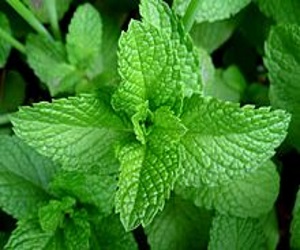
Mint.
Being a very popular herb, mint is commonly used in tea because of its numerous antioxidant properties. It possesses phosphorus, magnesium, potassium, vitamins C,A, calcium, and fiber! The Cherokee used the leaves of this plant crushed as cold compresses, or made into ointments, or even added in the bath to calm down and itchy skin. Moreover, they used a mixture of leaves and stems in order to reduce high blood pressure.
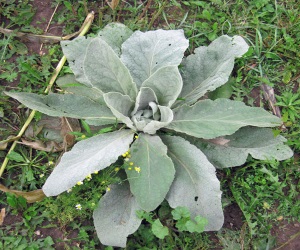
Mullein.
This herb soothes chest congestion and asthma. If you inhale the smoke from burning mullein leaves and roots, it will calm your lungs. This plant is exceptionally useful in soothing the mucous membranes. Due to its anti-inflammatory features, it calms the irritated and painful tissue and joint. Mullein flowers are used to prepare tea that contains a lot of mild sedative effects.

Big Stretch (Wild Ginger).
A tea made of the root of this plant was used by Cherokee in order to improve digestion, intestinal gas, colic, and upset stomach. A stronger tea from its root can even remove lungs secretion. You might use rootstocks from this plant instead of regular ginger and its flowers for flavoring your favorite recipe.

Jiddu Unigisdi (Wild Rose).
The fruit of this plant is high in vitamin C and is a great healing remedy for flu and cold. The Cherokee made a tea out of wild rose hips in order to stimulate kidney and bladder function. You can even try to make a decoction from its root to treat diarrhea.

Squirrel Tail (Yarrow).
Being known best for its blood-clotting features, the leaves of this plant (fresh or crushed) might be put to open wounds in order to prevent excess bleeding. The juice of this plant, when mixed with spring water, might stop intestinal illnesses and internal stomach bleeding. Its leaves can be used for tea in order to help in proper digestion and stimulate abdominal functions.

Kawi Iyusdi (Yellow Dock).
The Cherokee used this herb in their cuisines because it’s quite similar to spinach. But, it possesses a lot more minerals and vitamins because of its long roots gathers nutrients from deep underground.

Dandelion
Even though considered a weed, dandelion root has a long history of therapeutic use. In fact, this extremely beneficial plant has the ability to treat allergies, lower cholesterol levels, stimulate the production of bile, and detoxify the liver. It also has diuretic properties and it is especially beneficial for pregnant and menopausal women.
The best time to harvest dandelion root is in the spring, especially in the beginning of April. Make sure you pick it from places which are less polluted, such as areas away from the town and the road.
The best part about dandelion is that all parts of it have medicinal properties. For instance, the leaves are abundant in vitamins and can be used in a salad, along with potatoes and eggs. The stem relieves stomach issues, stimulates the gallbladder function, regulates the metabolism, and purifies the blood. Moreover, the stem can be used to treat diabetes while the milk from the stem can be used to remove warts.
Ultimately, people use dandelion flowers to prepare homemade dandelion syrup which purifies the blood, relieves a cough, and improves digestion.
DANDELION SYRUP RECIPE
Get 400 yellow dandelion flowers and pour 3 liters of water over them. Then, cut 4 oranges and 4 lemons into slices and add them to the mixture. Leave the mixture for 24 hours.
After 24 hours, strain the mixture and pour the liquid into a pot. Add 2 cups of sugar into the pot and cook for about half an hour.
Once the mixture boils and gets thick enough, remove from heat and transfer the syrup into sterilized jars. Use the dandelion syrup to treat cold, cough, or bronchitis.
HEALTH BENEFITS AND CANCER-FIGHTING PROPERTIES OF DANDELION ROOT
Dandelion has been long used and appreciated for its medicinal properties. Today, the modern medicine confirms its health benefits and suggests that it is even capable of curing cancer. Keep watching to learn more about preparing and storing roots for future use.
You need to peel, cut, and dry the dandelion roots on a fresh air. Let them dry for about two weeks or until they become brittle under the fingers. Once dried, put them into a jar and store in a dark and cool place.
Dandelion root has the ability to clean the kidneys, liver, lymph and gallbladder, which makes it effective at treating gallstones, constipation, hepatitis, acne, edema, and rheumatism. Moreover, it is very beneficial for women, especially for prevention and treatment of issues related to breastfeeding as well as cysts, tumors, and cancer.
HOW TO PREPARE DANDELION TEA?
Pick some leaves, dry, chop and mince them well. Store the mixture in a jar and keep for future use. To prepare the tea, you need to add half a teaspoon of the mixture into a glass of water. As simple as that!
Another option is to mix 60 grams of a fresh mixture and 30 grams of dried dandelion root. Put this mixture into a pan along with 2.5 ounces of water with a pinch of salt. Bring the boil, cover the pan, and simmer for about 20 minutes. Strain the liquid afterward and consume three cups daily.
- Medicinal Garden
- With your seeds kit, you’ll also receive a FREE Medicinal Guide that shows you how to turn these 10 plants into tinctures, ointments, salves, poultices, decoctions, infusions, essential oils —all in minute detail so you can follow our guide even if you’ve never made an herbal medicine in your life.
Carnivore’s Bible (is a wellknown meat processor providing custom meat processing services locally andacross the state of Montana and more. Whether your needs are for domestic meator wild game meat processing)
The Lost Book of Remedies PDF ( contains a series of medicinal andherbal recipes to make home made remedies from medicinal plants and herbs.Chromic diseases and maladies can be overcome by taking the remediesoutlined in this book. The writer claims that his grandfather was taughtherbalism and healing whilst in active service during world war twoand that he has treated many soldiers with his home made cures. )
Easy Cellar(Info about building and managing your root cellar, plus printable plans. The book on building and using root cellars – The Complete Root Cellar Book.)
The Lost Ways (Learn the long forgotten secrets that helped our forefathers survive famines,wars,economic crisis and anything else life threw at them)
LOST WAYS 2 ( Wordof the day: Prepare! And do it the old fashion way, like our fore-fathers did it and succeed longbefore us,because what lies ahead of us will require all the help we can get. Watch this video and learn the 3 skills that ensured our ancestors survival in hard times offamine and war.)
Native Americans Plants Use To Cure Everything - Miracle Plant That Cures Cancer, Hepatitis, Liver, Kidneys - PrepperFortress
If you're gonna fight, fight like you're the third monkey on the ramp to Noah's Ark... and brother its starting to rain. Join our efforts to Secure America's Borders and End Illegal Immigration by Joining ALIPAC's E-Mail Alerts network (CLICK HERE)
-
05-29-2023, 10:16 PM #325
Extreme fluoride toxicity exposed in federal lawsuit against the EPA
Monday, May 29, 2023 by: Lance D Johnson
Tags: badcancer, badhealth, badpollution, ban fluoride, big government, brain damage, EPA, Fluoridation, Fluoride, informed consent, IQ, medical experiment, neurodevelopment, Neurotoxin, tooth decay, toxic substances, toxicity, toxins
4,470VIEWS

(Natural News) A November 2016 petition filed with the Environmental Protection Agency (EPA) brought light to the negative health effects associated with water fluoridation. The petition called on the EPA to “protect the public and susceptible subpopulations from the neurotoxic risks of fluoride by banning the addition of fluoridation chemicals to water.”
For decades, municipal water sources have been “medicated” with fluoride (and arsenic) byproducts. This decades-long medical experiment is intended to prevent tooth decay in the general population, but this mass experiment comes with its own set of health risks and completely bypasses the informed consent principle.
EPA ignores fluoride petition, paving way for historic lawsuit that could ban water fluoridation
The 2016 petition against fluoride was ignored by the EPA. This prompted the Fluoride Action Network (FAN) and the Food & Water Watch to sue the EPA. Under the Toxic Substances Control Act, any citizen can sue the EPA if the agency rejects a petition to ban or regulate a toxic substance. There is more than enough evidence included with the petition to prove that mass water fluoridation causes harmful neurotoxic effects in the population. The petition included 180 published studies and approximately 2,500 pages of reference material showing that fluoride causes neurotoxicity and reduces IQ.
This is the first time in 44 years that citizens have brought a suit to the EPA using the Toxic Substances Control Act. This lawsuit includes expert testimony from within the CDC and EPA. These testimonies concur that fluoride is an environmental and human health toxin that is linked to specific harms in the human brain. The lawsuit has even revealed government interference that sought to hide important scientific findings on the toxicity of fluoride.
 The next phase of the trial will include a systematic review of fluoride’s neurotoxicity, taken directly from the National Toxicology Program. The report draft was publicized on March 15, 2022. According to a Freedom of Information Act request, there was significant government interference, preventing the release of the data. The trial will also publicize an analysis titled, “A Benchmark Dose Analysis for Maternal Pregnancy Urine-Fluoride and IQ in Children” by Dr. Philippe Grandjean et al., published June 8, 2021 in the journal Risk Analysis.
The next phase of the trial will include a systematic review of fluoride’s neurotoxicity, taken directly from the National Toxicology Program. The report draft was publicized on March 15, 2022. According to a Freedom of Information Act request, there was significant government interference, preventing the release of the data. The trial will also publicize an analysis titled, “A Benchmark Dose Analysis for Maternal Pregnancy Urine-Fluoride and IQ in Children” by Dr. Philippe Grandjean et al., published June 8, 2021 in the journal Risk Analysis.
Expert witnesses and scientists present compelling case to ban fluoridation of municipal water supplies
The EPA has made repeated efforts to have the case dismissed, but these new studies have prompted the judge to prolong the case. “So much has changed since the petition was filed … two significant series of studies—respective cohort studies—which everybody agrees is the best methodology,” said Judge Edward M. Chen of the U.S. District Court for the Northern District of California. “Everybody agrees that these were rigorous studies and everybody agrees that these studies would be part of the best available scientific evidence.”
The experts in this case include Dr. Grandjean, who has published 500 scientific papers. His work exposed the neurodevelopmental effects of prenatal mercury and was eventually used by the EPA to establish a reference dose for methyl-mercury. Grandjean concluded for the trial: “With a reasonable degree of scientific certainty, I therefore consider the elevated levels of fluoride exposure in the U.S. population as a serious public health concern.”
Other leading experts include Dr. Howard Hu and Dr. Bruce Lanphear. They are known for their research on lead, which ultimately set EPA standards and regulations for lead exposure. In their latest work on fluoride and neurodevelopment, Hu maintains that the amount of fluoride used in the water poses a threat to neurodevelopment, similar to lead exposure. “It is my opinion to a reasonable degree of scientific certainty, that the results of the element studies support the conclusion that fluoride is a developmental neurotoxicant at levels of internalized exposure seen in water fluoridated communities,” Hu concluded.
This historic case could force the EPA to establish a new reference level for fluoride, making it illegal to add the toxin to municipal water supplies.
For more on this topic, visit Fluoride.News.
Sources include:
TheEpochTimes.com
FederalRegister.gov
Pubmed.gov
FluorideAlert.org [PDF]
Extreme fluoride toxicity exposed in federal lawsuit against the EPA – NaturalNews.comIf you're gonna fight, fight like you're the third monkey on the ramp to Noah's Ark... and brother its starting to rain. Join our efforts to Secure America's Borders and End Illegal Immigration by Joining ALIPAC's E-Mail Alerts network (CLICK HERE)
-
05-29-2023, 10:20 PM #326
FDA finally admits that cocoa flavonols boost cardiovascular health
Monday, May 29, 2023 by: Ethan Huff
Tags: Cardiovascular, Chocolate, cocoa, Cures, FDA, flavonols, food science, goodfood, goodhealth, health, Heart, heart health, Herbs, nutrients, prevention, remedies, superfoods
3,220VIEWS
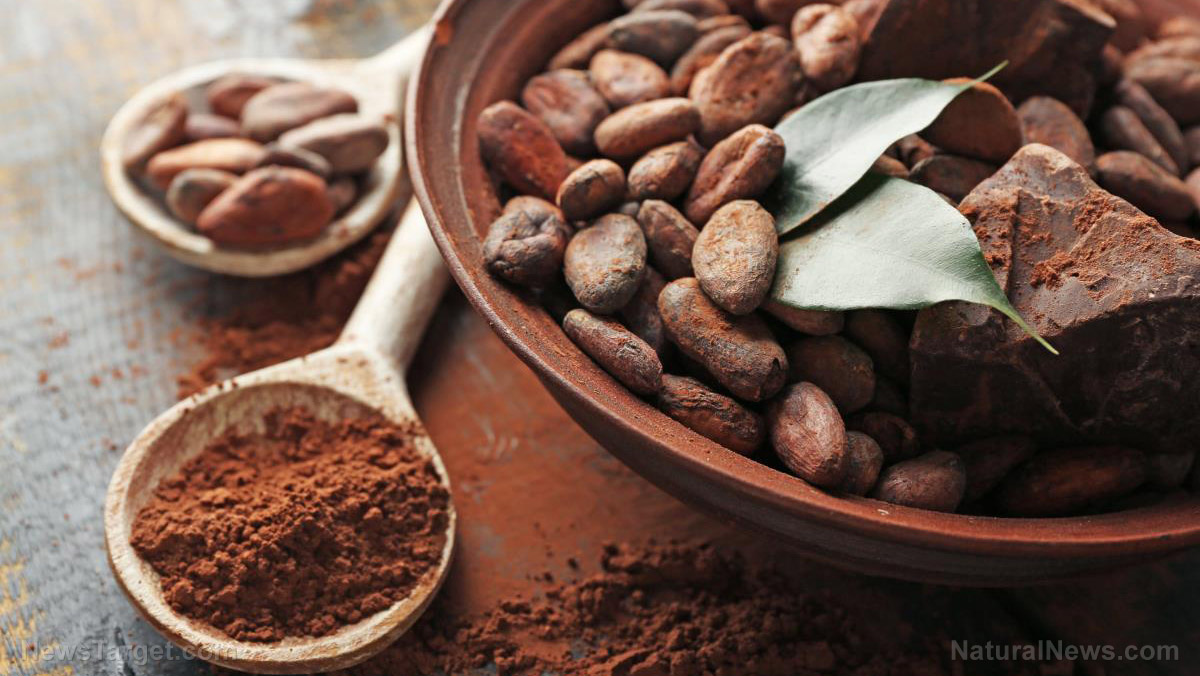 (Natural News) Every so often, the United States Food and Drug Administration (FDA) actually gets something right and tells Americans the truth, which just happened with regard to the heart health benefits of cocoa flavonoids.
(Natural News) Every so often, the United States Food and Drug Administration (FDA) actually gets something right and tells Americans the truth, which just happened with regard to the heart health benefits of cocoa flavonoids.
The FDA recently approved a new health claim for high-flavonol cocoa powder, which can help reduce the risk of cardiovascular disease – this according to the latest science.
Any food product that contains at least 200 milligrams (mg) of cocoa flavonols per serving and at least four percent concentration with naturally conserved cocoa flavonols can now bear the claim that it helps to support heart health.
The approval came five years after a filing was made with the FDA in 2018 to allow cocoa flavonol health claims on food products that contain the nutrient. The FDA was reluctant to grant its blessing, claiming that the scientific evidence is still very limited, but it was granted nonetheless.
(Related: Cocoa flavonols can also help boost brain performance and prevent cognitive decline.)
Consuming 500 mg per day of cocoa flavonols reduces the risk of cardiovascular death by 27 percent
The reason why the FDA established a 200 mg threshold for the claim has to do with the results of human clinical trials showing that cocoa flavonols at a concentration of anywhere from 500 mg to 1,000 mg help not just the heart but also the entire metabolic system.
New guidelines from the Academy of Nutrition and Dietetics recommends that people consume between 400 mg and 600 mg of cocoa flavonols per day in order to derive these benefits, but the FDA has agreed to a 200 mg minimum for associated health claims.
 Researchers from Harvard University conducted an extensive five-year, 21,400-person placebo-controlled COSMOS study into cocoa flavonols, the results of which were recently published in the Journal of Clinical Nutrition.
Researchers from Harvard University conducted an extensive five-year, 21,400-person placebo-controlled COSMOS study into cocoa flavonols, the results of which were recently published in the Journal of Clinical Nutrition.
The paper found that consuming 500 mg of cocoa flavonols per day significantly reduces one’s risk of dying from cardiovascular disease, as well as suffering a major cardiovascular event.
Compared to those taking a placebo, patients who consumed 500 mg per day of cocoa flavonols experienced a 27 percent reduction in cardiovascular death risk, which is hardly insignificant.
It should not be overlooked that this is the first new dietary guideline the FDA has ever recommended based not on a nutrient deficiency but rather on an improvement of health outcomes.
Instead of it being a claim about how Americans need to consume such-and-such amount of cocoa flavonols every day in order to avoid becoming deficient, the FDA is allowing food producers who use cocoa flavonols to make the claim that adding these nutrients to one’s diet can improve overall health outcomes.
The FDA’s expert guideline panel looked at not just the Harvard study but also more than 150 randomized controlled trials and 15 cohort studies on cocoa flavonols before informing these new guidelines.
Consuming cocoa flavonols daily may also help to lower the risk of diabetes while also improving blood pressure, cholesterol concentrations, and blood sugar.
The best way to intake more flavonols of all varieties is to consume more nutrient-dense, high-flavonol foods, which in addition to cocoa include tea, apples, and berries, among others.
And, to be clear, the FDA wants America to know that this is a “food-based recommendation,” and not a recommendation for people to take flavonol dietary supplements.
The FDA has something of a vendetta against dietary supplements and their associated health claims, probably because the agency is restricted from regulating them in the same way it does pharmaceutical drugs.
One thing to be aware of is the fact that cocoa plants are known to uptake toxic chemicals like lead and cadmium, so beware of where you source your cocoa.
Interested in learning more about the healing power of natural foods? You can do so at Cures.news.
Sources for this article include:
TheEpochTimes.com
NaturalNews.com
GlobeNewsWire.com
FDA finally admits that cocoa flavonols boost cardiovascular health – NaturalNews.comIf you're gonna fight, fight like you're the third monkey on the ramp to Noah's Ark... and brother its starting to rain. Join our efforts to Secure America's Borders and End Illegal Immigration by Joining ALIPAC's E-Mail Alerts network (CLICK HERE)
-
05-29-2023, 10:29 PM #327
How organic farming practices preserve biodiversity in the natural world while growing healthy abundant food
Monday, May 29, 2023 by: Olivia Cook
Tags: agriculture, compost, cover crops, crop rotations, crops, farming, food production, harvest, livestock, mulch, organic farming, organic no-till, organics, pest management, pests, rotational grazing, soil health, tilling
1,620VIEWS
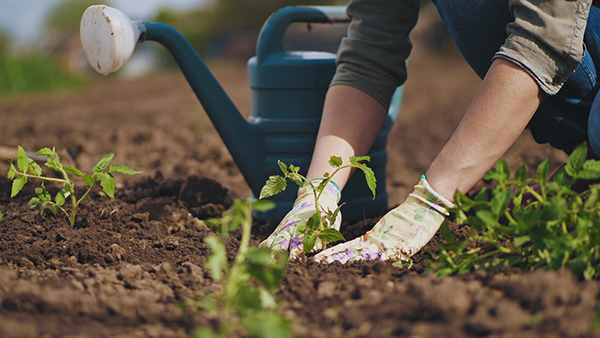 (Natural News) Organic farming’s ultimate goal is to build and improve the health of the soil and regenerate the health of not just ecosystems but people as well. (H/T to RodaleInstitute.org)
(Natural News) Organic farming’s ultimate goal is to build and improve the health of the soil and regenerate the health of not just ecosystems but people as well. (H/T to RodaleInstitute.org)
Scientists at the Rodale Institute, a non-profit dedicated to research on organic farming, note that organic farming practices enrich the soil, allowing it to hold more air and water and supplying crops with a steady release of nutrients while also hosting a robust population of beneficial microorganisms that play important roles in plant health.
Here are some organic farming practices that help preserve the biodiversity of the natural world while, at the same time, allowing people to grow healthy and abundant food.
Cover crops
Also known as “living mulch,” cover crops are grown in the soil by organic and conventional farmers in rotation with their cash crops to protect the soil from erosion and nutrient loss. This living mulch helps the soil retain moisture in the summer and prevents weeds from growing. It also protects the roots of plants and allows rain to penetrate and enrich the soil during winter.
Crop rotations
Crop rotation is the practice of planting different crops sequentially on the same plot of land. This practice improves soil health, optimizes the nutrients in the soil and increases biomass from different crops’ root structures. It also increases biodiversity on the farm and helps combat pests by interrupting pest mating. All of this can be done without any synthetic inputs.
Compost
Composting drastically reduces an organic farmer’s need for chemical or synthetic inputs. The process of creating compost is also an effective way for farmers to recycle many of the organic materials usually considered “waste,” like kitchen scraps, paper, yard clippings, animal manure, leaves and straw.
 All of this composted material creates valuable byproducts that feed plants for healthy growth and promote a diversity of microorganisms to flourish in the soil.
All of this composted material creates valuable byproducts that feed plants for healthy growth and promote a diversity of microorganisms to flourish in the soil.
Organic no-till
The purpose of tilling the soil is to work with needed ingredients like compost, nitrogen and phosphorous to prepare and boost the soil’s overall health, but tilling too often or too deep can do more damage than good to your soil.
Small-scale organic no-till farmers use hand tools, like hoes and rakes. Large-scale organic no-till farmers also use a special tractor called the roller-crimper, which mows plants down, cutting the stems every seven inches in a single pass – saving vital time and energy for farmers.
The now-terminated cover crops remain on the ground, forming a thick mulch that suffocates weeds. The cash crops then grow straight up through the cover mulch.
Pest management
Pests are a serious problem for all farmers. The difference between organic and conventional farmers is that the former implement strategies that not only protect crops but also contribute to healthy and resilient soil and encourage populations of natural predators and beneficial insects, like ladybugs and honeybees.
Monitoring and identifying insect pests and their natural enemies serve as an early warning system for the presence of pests and diseases. Visual observation, along with the strategic use of pheromones and other non-synthetic products can disturb pest mating cycles. Mechanical controls like traps are also used to control pest populations.
Livestock management
Raising livestock assists with weed management by eating or trampling unwanted plants. They also improve soil health by fertilizing it with their manure. Organic farmers often choose heritage breeds of cattle, chickens, goats and other livestock, which tend to be hardier and better suited to life outdoors due to their genetic predisposition to surviving on forage. (Related: Expert recommends incorporating livestock on farmland to improve soil quality.)
Rotational grazing
Rotational grazing is the process by which pastures are subdivided into smaller areas and only certain areas are used for grazing at a time, while the remainder are allowed to rest to allow forage plants to recover and the soil to build up valuable nutrients.
Many organic farmers are turning to rotational grazing for increased soil fertility, increased forage production, higher quality forage stand, controlled forage use, less wasted forage, improved drought management, consistent animal monitoring and extended grazing periods.
Visit OrganicFarming.news to learn more about green living with organic farming.
Watch this video to learn about hydroponics and how Indian organic farmers are using it to grow their crops.
This video is from the Backyard Farming channel on Brighteon.com.
More related stories:
Report: Organic farming yields 40% more crops than conventional farming through drought.
Home gardening basics: How to keep composting during the winter.
Keep your garden soil healthy with crop rotation.
Critical Disclosure: Food supply issues can be solved if people grow their own food, Jim Gale tells Jim White – Brighteon.TV.
How shifting to organic farming could help rural America rebound from economic disaster.
Sources include:
RodaleInstitute.org 1
RodaleInstitute.org 2
RHS.org.uk
ScienceDirect.com
LivestockConservancy.org
HustlerEquipment.com
Brighteon.com
How organic farming practices preserve biodiversity in the natural world while growing healthy abundant food – NaturalNews.comIf you're gonna fight, fight like you're the third monkey on the ramp to Noah's Ark... and brother its starting to rain. Join our efforts to Secure America's Borders and End Illegal Immigration by Joining ALIPAC's E-Mail Alerts network (CLICK HERE)
-
06-05-2023, 10:13 PM #328
40 Bizarre Home Remedies Our Grandparents Taught Us That Actually Work
Monday, June 5, 2023 14:05
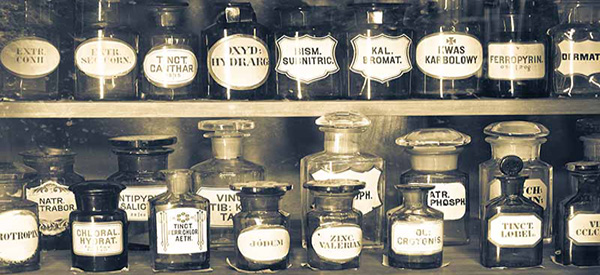
by NICK CONWAY
These days, it has become all too common for people to reach for a pill bottle or call the doctor anytime something goes wrong, or even for the smallest scrape. The simple, wacky home remedies of our grandparents, those weird concoctions formed from everyday household goods, are often mocked by today’s medical establishment. But surprisingly, the truth is that our grandparents actually knew a lot more about the world than we give them credit for, and many of these old-fashioned folk remedies actually work. Not just that, but many of them work better than the synthetic pharmaceuticals that so many people stuff their bodies with today.
Here are 40 weird, wacky, but shockingly effective home remedies that still work today, and would make grandma proud.
1. Use Garlic and Olive Oil for Athlete’s Foot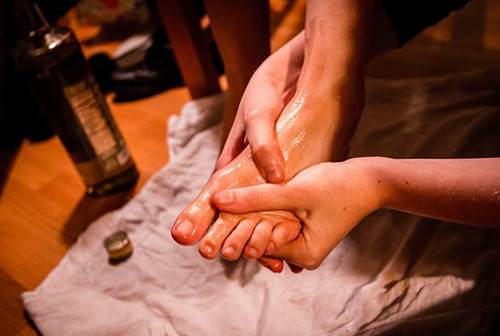
Everyone knows about the many health benefits of garlic, but did you know that it can fix your athlete’s foot problem in a jiffy? Just mince some garlic cloves, mix them with natural olive oil, and then use bit of cotton to rub this mixture onto the affected area between the toes.2. Potato Slices for Headaches

Headaches and/or migraines can ruin even the best day, but there is a weird natural solution that works: potato slices. Just cut a few slices from a raw potato, soak them in a very thin cloth, and apply them to your forehead or directly to the temples.
3. Ease Cuticle Infections with Vinegar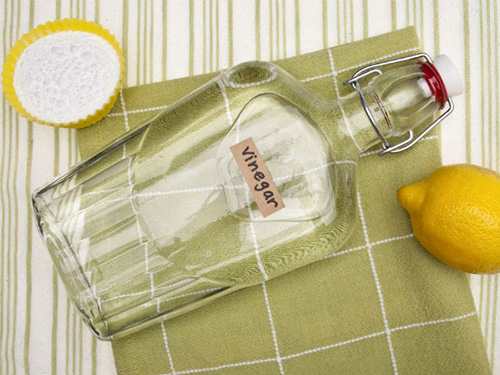
Done too much manicuring? Cuticles all torn up and infected? Make a glass of vinegar and warm water, then put your fingers in it for about 15 minutes. Repeat this procedure once a day or so until the infection fades away.
4. Use Vinegar to Cure Swimmer’s Ear
There’s nothing that ruins a good day at the beach like coming home with swimmer’s ear. But when your grandparents told you to drop some vinegar in your ears, they weren’t kidding. The acidic properties of vinegar can kill off that awful swimmer’s ear bacteria, leaving you feeling like yourself again. Just take out some white vinegar, dilute it with distilled water, and put three drops into the problematic ear, three times a day, until the problem fades.
5. Olive Oil for Eczema
Feeling itchy already? Eczema can make anyone grow crazy. But olive oil, which is full of antioxidants and often used as an ingredient in professional skin creams, isn’t just good for athlete’s foot: it can ease the symptoms of eczema as well. Simply rub some olive oil onto the eczema-affected areas of your skin, and it should help quite a bit. Moreover, olive oil is named in the Bible as a cure-all remedy.
6. Fix Hiccups with a Spoonful of Sugar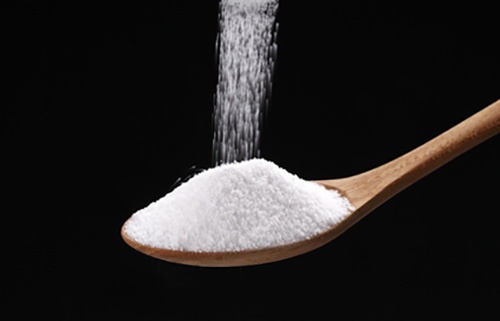
Yes, seriously. The legends are true. Don’t get too overzealous with it, because diabetes isn’t something to mess around with, but this old-fashioned trick will halt the hiccups in their tracks. The reason why is because the behavior we call “hiccups” are actually just spasms of your diaphragm, so having a spoon of dry sugar will throw off the nerve muscles and cure their agitation.7. Get rid of warts with duct tape
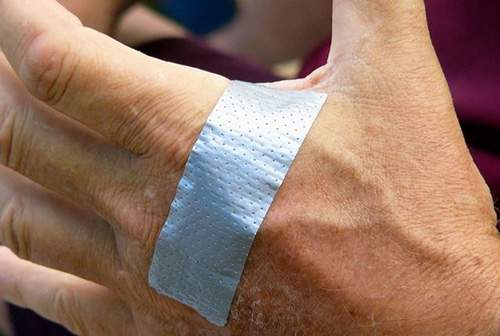
It sounds crazy, but it works. Instead of going to all the work to get your warts frozen off, just covered them with duct tape. After cleaning a wart off, just apply a strip of the tape to the affected area, and then keep it there for three days. After that, remove, rub the wart area with a pumice stone, and then apply new tape. Continue this process every three days until the wart goes the way of the dinosaurs. Here are 26 practical survival uses for duct tape.
8. Treat Acne with Coconut Oil
Coconut oil might seem like the cool new kid on the block, but it’s actually an old-timer that’s been around since the 1800s. In addition to many other uses, coconut oil is an effective treatment for acne, since its antibiotic properties prevent further breakouts. Just apply coconut oil to the skin, maybe mixing it with a little raw honey.
9. Have a Little Yogurt for That Bad Breath
Bad breath, officially known as halitosis, is a terrible thing to live with. But the cure for it is right there in your fridge: yogurt. At least two servings a day of this probiotic wonder, ideally a plain brand with no sugar, changes the landscape of your tongue so that it won’t breed any more the bad bacteria that produces that distinctive stink.
10. Deal with bug bites by using toothpaste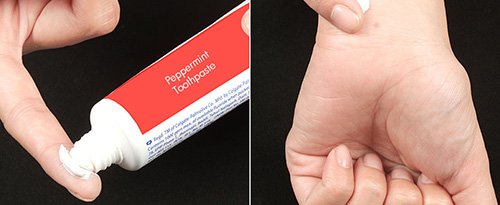
Well, not technically the toothpaste itself, but rather, the peppermint oil inside the toothpaste: if you have the pure peppermint oil itself, that’s even more effective. Either way, applying peppermint oil to a bug bite—even if it’s just through dabbing on a little toothpaste – will immediately reduce the raw itchiness we all know too well.
11. Use Licorice to Eliminate Corns
Yes, licorice, everyone’s least favorite candy. But the one thing worse than licorice is having a corn on your toe. If you soak some licorice with oil, apply it all to the affected area, then wrap it tight under plastic wrap (and maybe a sock) for 6-8 hours—for instance, overnight—this will cause the licorice to soften the corn.
12. Ease Your Hangover with Apple Cider Vinegar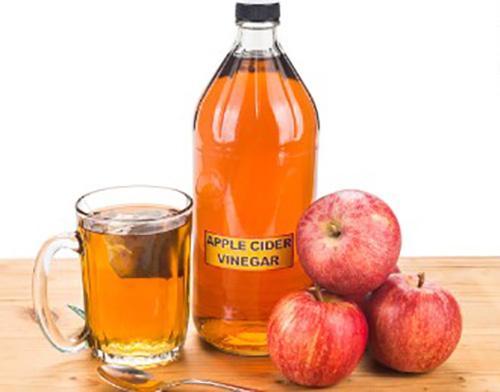
Drinking might be fun, but hangovers aren’t fun for anyone. But when you used to see grandpa downing a shot of apple cider vinegar after a night with his buddies, he knew what he was doing. Apple cider vinegar balances the pH levels in your stomach after a little too much alcohol throws it off. Just gulp down a teaspoon of this vinegar, or a small shot-glass. If you can’t take it straight, dilute it with some water. Here’s how you can make raw apple cider vinegar at home.
13. Constipation with beets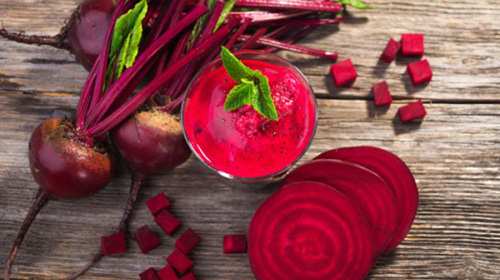
The human body needs to eliminate waste, and when it gets all bunched up, major discomfort ensues. One home solution you may have heard from your grandparents was to eat some fresh-steamed beets, then drink the water they were steamed in. This should clear out your colon like magic. Just be warned that when you do go, your stools or urine may be bright red: nothing to worry about, just the natural dye of the beets.
14. Vodka for stinky feet

Having trouble with foot odor? Get some vodka. No, we’re not suggesting that you get drunk and avoid the problem. The key is that alcoholic is an antiseptic, which means it eliminates the fungus that causes foot odor, and dries your feet out. Just soak a thin cloth in some vodka, swipe your foot down, and feel the smell go away.
15. Mix Cumin, Honey, Cinnamon and Ginger for Diarrhea
A bad case of the runs can keep you up all night. Instead of taking drugs that will simply constipate you, thereby causing more stomach pains, a better natural remedy is to combine a teaspoon of cumin, and the same portion of honey, cinnamon, and ginger into a paste that you can drink.
Check these 10 health benefits of cinnamon that surprised even us.
16. Lemons for an Earache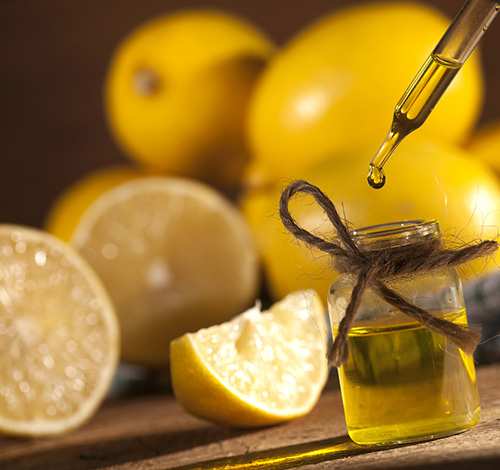
Pain in the ears can be soothed by the application of freshly-squeezed lemons. Just squeeze a lemon onto a Q-tip, and delicately rub this just inside the ear to restore pH balance.
17. Stinging Nettle for Hair Loss
You can’t force hair to regrow once it’s already gone, but you can slow down the rate of hair loss through the use of stinging nettle, an herb often used for tea. Drinking stinging nettle tea a few times a day should help, and you can also massage stinging nettle itself in your scalp.
18. Cure Nausea with Olives
Whether it’s from motion sickness or an unpleasant sight, the familiar (but unpleasant) side effects associated with nausea can be cured by eating olives, due to the tannin inside them.
19. Potatoes for Spider Bites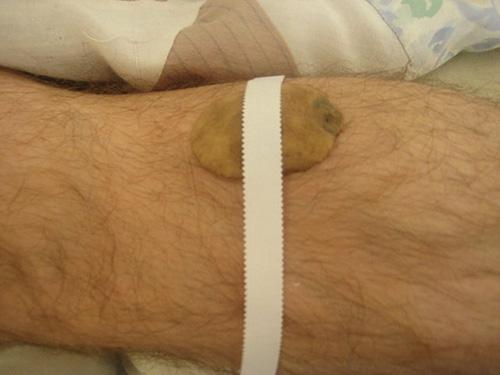
If a spider managed to sink its teeth into you, ease the itching and swelling by shredding a potato, wrapping the pieces in cloth, and applying to the bite area. Note, this is a treatment for symptoms of a regular, non-deadly bite: if the bite comes from a more deadly spider, such as a black widow, seek immediate medical attention.
20. Raw Honey for Chapped Lips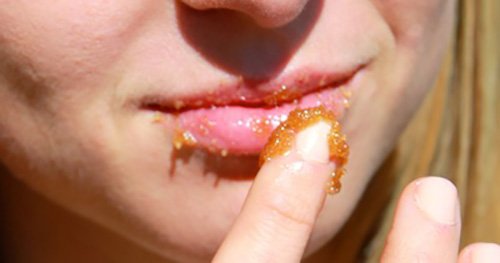
Don’t ever waste your money on Chapstick again. Much has been said about the healing properties of raw, organic honey, but if your lips are chapped, you can simply apply honey to the affected area—rub it on, just as you would Chapstick—and it will do the job nicely, and taste better to boot. Just make sure the honey is both raw and organic. Here are 23 survival uses for honey that you didn’t know about.
21. Garlic for Allergies

For a more natural antihistamine when your nasal allergies act up, eat lots of garlic, whether it’s straight bulbs or slices on crackers. Garlic contains a lot of the antioxidant quercetin, which eases allergy symptoms. If there’s no garlic in the pantry, onions work as well. This is how to treat allergies naturally.
22. Buttermilk and Ginger for Diarrhea
If you don’t have cumin on hand, another weird-but-effective home remedy for diarrhea is to mix half of a teaspoon of dry ginger into a cup of buttermilk, and drink it.
23. Treat Styes with Potatoes
If you haven’t noticed, potatoes are a lot more powerful than people realize. If you get a stye on your eye, just grate a potato, wrap the gratings in a cloth, and press to the affected area to ease inflammation.
24. Avoid Mosquitoes with Garlic
If you don’t want to get eaten alive with mosquitoes, enjoy a garlic-rich diet, because mosquitoes are totally repelled by garlic. For further protection, rub garlic oil on your skin. If it’s already too late, you can also ease the stinging of the bites with garlic as well. Here’s a DIY mosquito trap that really works!
25. Yams for Menopause
To up your dosage of vitamin A, lower your cholesterol, and add more antioxidants to your diet, start incorporating yams—real yams, not sweet potatoes—into your regular daily diet. This will help with common menopause symptoms.
26. Apples Help the Bowels
Apples are high in pectin, a naturally occurring fiber that both bulks up and softens stools. This means that apples are an effective treatment for both diarrhea and constipation. Just make sure to eat the skin too, which contains valuable ursolic acid.
27. Banana Peel for Poison Ivy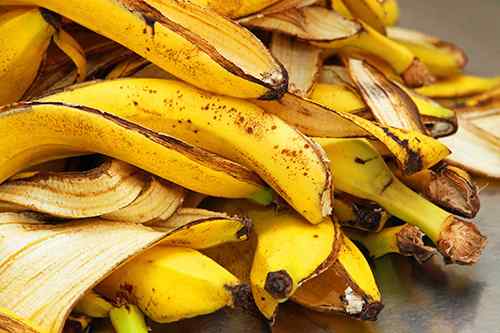
While bananas won’t prevent you from getting the allergic rash that 85% of the population contracts from touching poison ivy, they can help. Rub the inside of a banana peel against poison ivy rash for relief from the pain and itchiness.
28. Honey for Acid Reflux
As soon as the symptoms of acid reflux begin affecting you, swallow three spoons of honey, and it should help you achieve better digestion.
29. Blackstrap molasses for Constipation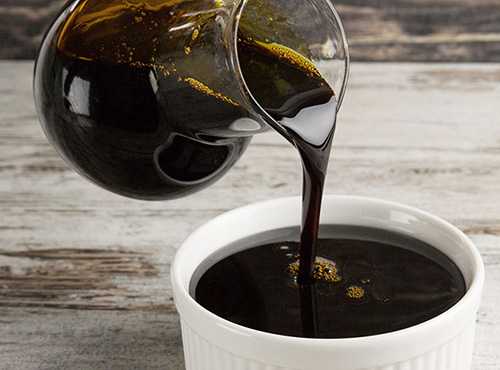
If you suffer from frequent constipation, try injecting a little blackstrap molasses into your diet, whether as a coffee additive or an extra ingredient in cookies. This molasses should ease constipation, but be careful not to over-indulge, because too much molasses will increase constipation.
30. Pine Syrup for Sore Throats
You know what helps a sore throat? Pine needles. Yes, really. To make pine syrup, collect a cup of freshly-washed pine needles, and thoroughly blend them. Meanwhile, boil water, corn syrup, and a bit of salt, mix this with the needles, then steep for a few hours. Keep this syrup in the refrigerator for at least a month, then keep it on hand forever to treat sore throats.
31. DIY Cough Syrup
If you want to make a good cough syrup from the ingredients of your pantry, mix together ¼ teaspoon ground ginger, 1 tablespoon of apple cider vinegar, ¼ teaspoon cayenne pepper, 1 tablespoon of honey, and a few spoons of water. Mix it all together, and have 1-3 teaspoons to ease coughing symptoms. This is how I make my own cough mixture.
32. Garlic for toothache
Nothing will keep you up at night like a bad cavity or an exposed nerve. While garlic won’t cure the underlying issue, chewing on garlic at night, particularly chewing whole cloves in the affected area, will ease pain tremendously.
33. Put on Wet Socks to Treat a Cold
Hear us out for a minute. To treat the symptoms of a common cold, begin by soaking your feet in hot water for at least three minutes – or just taking a bath. Meanwhile, soak a pair of your socks in ice water. Put the socks on your feet, cover them up with a pair of wool socks, and then go to bed. As you sleep with these horribly cold feet, the blood vessels will constrict, pushing nutrients up into your body to push out the infection.
34. Fix Dry Skin
To soften dry skin, break down two bananas and mix them with a bit of honey. Apply this paste to the skin, let it sit for about 20 minutes, and then wash it off, and your skin should feel softer.
35. Teabags for Burns
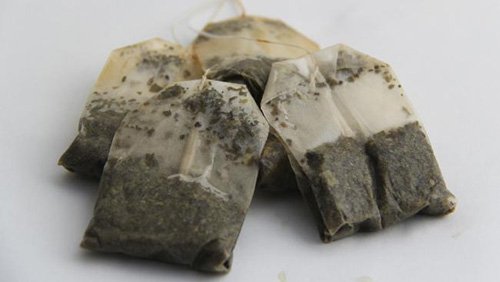
Get a cool-temperature, wet teabag, of any tea, and place it directly on the burned area. This won’t fix the burn, but it will relieve the pain almost immediately.
36. Oil Pulling
This might have become a trend recently, but it’s actually an old practice that our grandparents learned from their grandparents. Basically, enhance your dental routine by taking a spoonful of coconut oil – though other oils work as well – and swishing it in your mouth for five minutes a day, specifically pulling it through the teeth, and then spit it out into the toilet. The oil will “pull” all of the toxins out of the mouth, allowing you to spit them out in one go. When used in addition to standard brushing and flossing, oil pulling will help digestion, reduce gingivitis, prevent receding gums, get rid of bad breath, strengthen teeth, and much, much more.
37. Help Eczema with an Oatmeal Bath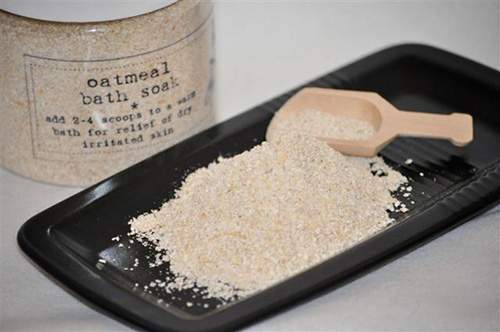
If the horrendous itchiness of eczema still has you down, you can hugely reduce the itchiness by following your grandmother’s old advice taking a bath of oatmeal. There’s a reason that so many lotions and pharmaceutical eczema treatments contain oatmeal as an ingredient: it really works! For a home solution, just make a bath for yourself, fill it with colloidal oatmeal, and then soak for a while.
38. Stop Your Snoring
Is your snoring annoying your wife or husband? Try drinking a glass of warm milk with a teaspoon of turmeric powder added to it before bed, and hear your partner’s relief.
39. Basil Leaves and Ginger for Fever
Fevers are the body’s way of pushing out an infection, but when it’s time to cut back on the heat, here’s a home solution. Crush some ginger and basil leaves together into paste, then add a teaspoon of honey. Squeeze out the liquid, and then take a drink ever four hours or so.
40. Soak Golden Raisins in Gin for Arthritis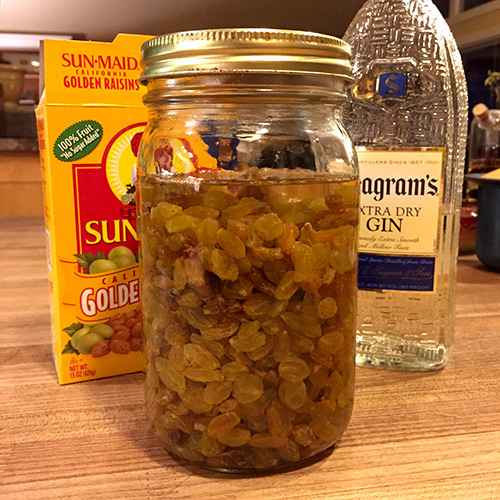
If there’s one thing that afflicted so many of our grandparents, it was the terrible swelling pains of arthritis. But they had a home remedy that still works today. Get some golden raisins, soak them in gin, and let it sit overnight until all of the gin has been soaked up. After this is done, eat about ten raisins a day. While this won’t fix the underlying problems of arthritis, it will greatly ease the symptoms. Here you can find more old fashioned arthritisremedies your ancestors used, in The Lost Book of Herbal Remedies
40 Bizarre Home Remedies Our Grandparents Taught Us That Actually Work | Self-Sufficiency | Before It's News (beforeitsnews.com)
If you're gonna fight, fight like you're the third monkey on the ramp to Noah's Ark... and brother its starting to rain. Join our efforts to Secure America's Borders and End Illegal Immigration by Joining ALIPAC's E-Mail Alerts network (CLICK HERE)
-
06-07-2023, 07:26 AM #329
Super-antioxidant N-acetylcysteine helps clear body of mRNA jab toxins
Tuesday, June 06, 2023 by: Ethan Huff
Tags: alternative medicine, coronavirus, COVID, detox, detoxification, dietary supplement, goodhealth, goodmedicine, graphene oxide, mRNA, N-Acetylcysteine, NAC, natural remedies, spike proteins, supplement, supplements, vaccination, vaccines
2,360VIEWS
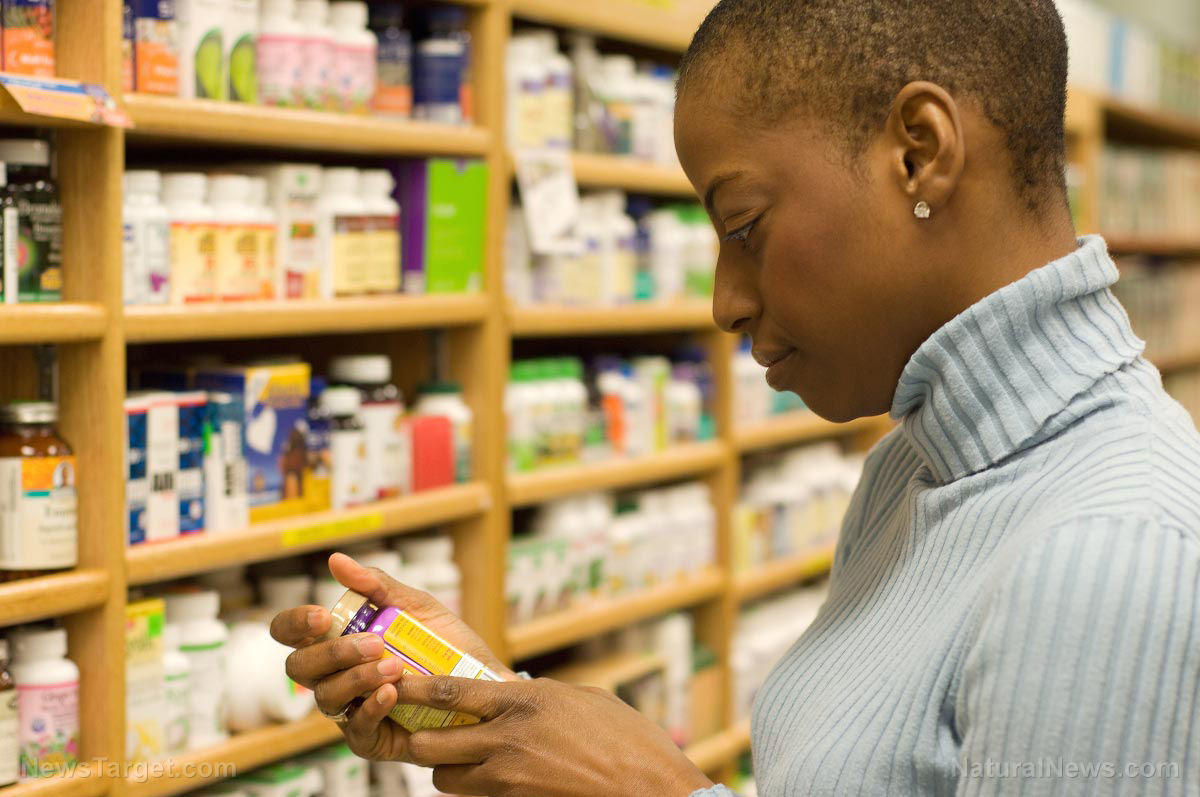 (Natural News) The presence of graphene oxide and other noxious chemicals in Wuhan coronavirus (COVID-19) “vaccines” is taking a major toll on the health of every person who got injected with one – and possibly on the unvaccinated who are being “shed” on as well. There is a solution, though: N-acetylcysteine, also known as NAC.
(Natural News) The presence of graphene oxide and other noxious chemicals in Wuhan coronavirus (COVID-19) “vaccines” is taking a major toll on the health of every person who got injected with one – and possibly on the unvaccinated who are being “shed” on as well. There is a solution, though: N-acetylcysteine, also known as NAC.
NAC can help to rid the body of graphene oxide, spike proteins, and whatever other poisons are hidden inside COVID injection vials because of their super-antioxidant powers. NAC can help to stop the things that damage cellular function and DNA integrity, including COVID jabs.
“NAC can help remove graphene oxide because it’s a precursor to glutathione,” says Brendon Fallon of “Vital Signs,” a program of The Epoch Times, quoting Drs. Yuhong Dong and Ann Corson, who authored an article about the subject.
“When our glutathione levels are high, our immune system works well. But when there’s more graphene oxide than glutathione in the body, our immune system collapses, triggering a cytokine storm. In this way, graphene oxide in the body can cause disease.”
(Related: Is this the reason why the FDA is trying to ban NAC, because it helps clear the body of COVID and COVID jab poisons?)
Astaxanthin, melatonin, milk thistle, quercetin, vitamin C and vitamin D3 all aid in detoxifying the body of COVID injections
Where NAC comes into play in all this is that by supplementing your diet with it, your body’s natural glutathione levels will increase in response. This, in turn, will give your body the extra detoxifying power it needs to get rid of all the toxins from COVID injections.
 “NAC helps the body to make glutathione. What’s more, NAC can be combined with zinc, another powerful antioxidant, to degrade graphene oxide.”
“NAC helps the body to make glutathione. What’s more, NAC can be combined with zinc, another powerful antioxidant, to degrade graphene oxide.”
There are a number of other powerful natural remedies that go along with NAC and zinc to keep your body clean and COVID jab-free. These include astaxanthin, melatonin, milk thistle, quercetin, vitamin C, and vitamin D3.
There is no guarantee that taking all these things, even in high doses, will for sure cleanse your body of COVID jab toxins like graphene oxide – but they can sure help.
NAC is also a remedy for so-called “long COVID,” as explained by pain medicine specialist Dr. Joseph Audette.
“NAC is an amino acid that our body already has, but we’re trying to supplement it more so our liver will actually convert it to glutathione, because glutathione is a scavenger in our body and gets rid of a lot of toxic materials that may have developed as our immune system has first attacked the virus early on, but then if our immune system overreacted may still be attacking certain cells in our body and causing a debris in our body that from an acupuncture standpoint we look at as a certain type of toxicity.”
From this, the takeaway is that supplementing with NAC gives our bodies that extra boost it needs to really clean up all the leftovers from either COVID itself or the toxic injection in people who took it.
Even if you did not take the jab or ever “catch” COVID, your body is still under attack every single day by toxins that produce free radicals, which need to be scavenged and removed by antioxidants. NAC is one of the best super-antioxidants out there, so give it a look.
There are also bioactive, denatured, whey-derived varieties of NAC out there that some say have been clinically shown to possibly work even better than NAC because of its increased bioavailability.
Learn more about natural remedies that can help clear your body of COVID and COVID jab poisons at AlternativeMedicine.news.
Sources for this article include:
TheEpochTimes.com
Elquanah.com
NaturalNews.com
Super-antioxidant N-acetylcysteine helps clear body of mRNA jab toxins – NaturalNews.comIf you're gonna fight, fight like you're the third monkey on the ramp to Noah's Ark... and brother its starting to rain. Join our efforts to Secure America's Borders and End Illegal Immigration by Joining ALIPAC's E-Mail Alerts network (CLICK HERE)
-
06-07-2023, 06:03 PM #330

Support a healthy heart and immune system with shiitake mushrooms
SUPPORT A HEALTHY HEART AND IMMUNE SYSTEM WITH SHIITAKE MUSHROOMS

 NaturalNews
NaturalNews
NaturalNews
45811 subscribersIf you're gonna fight, fight like you're the third monkey on the ramp to Noah's Ark... and brother its starting to rain. Join our efforts to Secure America's Borders and End Illegal Immigration by Joining ALIPAC's E-Mail Alerts network (CLICK HERE)
Similar Threads
-
Massachusetts Obamacare Site Tells Healthy People to Confirm Mental Diseases & Makes
By AirborneSapper7 in forum Other Topics News and IssuesReplies: 2Last Post: 11-12-2013, 04:41 AM -
Healthy Americans Health Insurance may Double, Even Triple When Obamacare Kicks In
By AirborneSapper7 in forum Other Topics News and IssuesReplies: 0Last Post: 07-01-2013, 11:48 PM -
CODEX NUTRITION COMMITTEE CHOOSES MALNUTRITION with sub-optimal nutrition
By AirborneSapper7 in forum Other Topics News and IssuesReplies: 0Last Post: 12-16-2012, 05:07 AM -
Try Parenting Instead Of Mental Health Screening
By PinestrawGuys in forum Other Topics News and IssuesReplies: 8Last Post: 02-08-2007, 04:37 PM -
Latino Diet Changes Deemed Health Crisi
By Charlesoakisland in forum illegal immigration News Stories & ReportsReplies: 12Last Post: 04-26-2005, 03:01 PM


 25Likes
25Likes LinkBack URL
LinkBack URL About LinkBacks
About LinkBacks




 Reply With Quote
Reply With Quote


Twitter just suspended Ad account on X
04-19-2024, 05:54 PM in illegal immigration Announcements